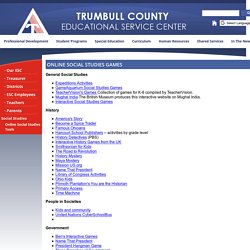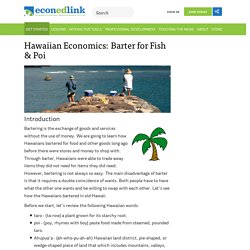

Free Primary Source Materials For Social Studies Teachers. CIVICS RENEWAL NETWORK. Free Lesson Plans and Games for Learning Civics.
Best of History Web Sites. It Pays to Stay in School. Western Reserve Public Media. Circle Grapher. The World Factbook. People from nearly every country share information with CIA, and new individuals contact us daily.

If you have information you think might interest CIA due to our foreign intelligence collection mission, there are many ways to reach us. If you know of an imminent threat to a location inside the U.S., immediately contact your local law enforcement or FBI Field Office. For threats outside the U.S., contact CIA or go to a U.S. Create A Graph. CSS LP S02 BA L05 I01 01. The Search for Longitude. Archive: Xpedition Hall. The National Map: Small Scale. The National Map is now offering a collection of small-scale datasets that can be downloaded for free.

Although the 1997-2014 Edition of the National Atlas of the United States was retired in September 2014, The National Map recognizes the importance of continuing to make a collection of the small-scale datasets, originally developed for the National Atlas, available to users. Small-scale maps have an advantage over large-scale maps when there is a need to show a large area in a single view. This makes small-scale maps an ideal solution for scientists, decision-makers, and planners needing to provide a geographical context for the research projects.
Generally, certain geographical and feature details found in large-scale maps are limited or omitted in small-scale maps. Early Multi-National Influences in the United States. Activity 1.

What's Wrong with This Picture? A Map of the World Share with the class the 1482 World Map from 1492: An Ongoing Voyage, a link from the EDSITEment-reviewed website American Memory. Lost King of the Maya. Welcome to the companion Web site to "Lost King of the Maya," originally broadcast on February 13, 2001.

The film follows the work of archeologists who are using new excavations and hieroglyphic translations to interpret the early history of Copán, a Classic Maya site in northern Honduras. (For NOVA's April 2008 program on how Maya glyphs were translated, visit the "Cracking the Maya Code" program site.) Here's what you'll find online: Tour Copán with David Stuart In these video clips, David Stuart, a world-renowned expert on the written language of the ancient Maya, guides you to some of Copán's greatest treasures. Incidents of Travel In 1839, American journalist John Lloyd Stephens "discovered" Copán when a Mayan guide led him to the site. Read Stephens' riveting account of entering this magnificent lost city. Thinkport Tool: My Timeline. Online Social Studies Tools. General Social Studies History.

Social Studies Online. Culture Quest World Tour - ipl2: Information You Can Trust. 3-6 Student Interactives - Social Studies. Teaching That Sticks: Online History Simulations. Countries and Cultures for Kids. Government for Kids. Do I Look Like I'm Made of Money? Money Doesn't Grow on Trees. Find it Have you ever found a coin on the sidewalk?

Or maybe under the cushions of a chair? Money can be lost anywhere. Where Did You Come From? Complete the following activity and then be prepared to share and discuss your responses with the class.

Do you like fruits? Do you like vegetables? Where do you get your fruits and vegetables? Have you ever wondered where those fruits and vegetables come from? Hawaiian Economics: Barter for Fish & Poi. Hawaiians Love 'Fish and Poi!

' Many Hawaiians loved to eat fish and poi. Salted dried fish or fresh fish served with poi (made from mashed taro) were a delicious part of the Hawaiian diet. Old Business, New Business. Activity 1 The web site Business Then and Now introduces students to some long-ago occupations in which people specialized.

Ironically, that specialization might have lead to the person's surname. Your teacher will divide you into groups and give you a title from the heading, "Business Then and Now. " Read about the history and changes in your business and be ready to share that information with your class. Be sure you can tell if this business offers goods or services. EconEdLink- Widget Production. The Write Stuff. Write Stuff Use this sheet to search the following Web sites for research.

The task is to discover one thing about pencils that might stump the rest of the class. "No. 339 Thoreau's Pencils" by John H. Lienhard How was the famous philosopher, Henry David Thoreau related to the development of pencils? Access this link to find out. Where Did You Come From? EconEdLink-Lean on Me. Explain: Division of labor occurs when the production of a good is broken down into separate tasks, with different workers performing each task. Specialization and division of labor usually increase the productivity of workers. Greater specialization leads to increasing interdependence among producers and consumers. You Can BANK on This! (Part 2) This lesson is a continuation of the first lesson on banking (Part 1). EconEdLink - toys for me. EconEdLink - A perfect pet. EconEdLink. Pie graph hard 2. Pie Charts/ Basic Social Studies. Dictator For A Day. What Is Government? Informedvoter 1. World Culture Encyclopedia.
Every Culture (To-Z) Westernhemisphereunit. LifeinWesternHemi. GeoEarlyPeopleWHemis. Why Communities Move. 1. Have students discuss reasons whole groups or communities might move to another location.Review with students some of the push factors and pull factors that cause individuals to move from one location to another. Then have students discuss possible reasons that whole groups or communities might move to another location. Provide them with the following examples: Migration Around the World. 1. Migration: Reasons to Move. Native Americans of North America Printables - Native American Research and Display Forms. Mrs Donn's Special Sections - Native Americans. Books we used: American's Fascinating Indian Heritage, Reader's Digest, 1978 Indians of Yesterday by Marion E. Gridley, sponsored by the Indian Council Fire, 1940 Indians of the Americans, National Geographic Society, 1958 Indian Reservations, Bureau of Indian Affairs, Dept of the Interior, 1950 Questions on Indian Culture, by Dr.
Native American Cultures Across the U.S. Activity 1. Representing Native Americans Today Before offering information about Native American Nations and cultural groups, introduce the terms "Indian," "Native American," and "American Indian," and ask students what they know about these terms and about the people they represent. World History For Us All: Big Era 7. World History For Us All: Big Era 6.
FiveThemesEcuador. Mrdonn.org - Regions - Free Powerpoints, Games, Activities. Mapping World Heritage. 1. Introduce UNESCO World Heritage Sites. Explain to students that the United Nations Educational, Scientific, and Cultural Organization (UNESCO) is a global organization with more than 190 member countries. UNESCO encourages the identification, protection, and preservation of cultural and natural sites around the world. UNESCO has designated more than 900 places as having outstanding value to humanity, naming them World Heritage Sites. Some of the sites have cultural significance, some have natural or environmental significance, and some are both cultural and natural. Latitude, Longitude, and Temperature.
Latitude and Longitude - Free Lesson Plans, Activities, Games. Introduction to Latitude and Longitude. Exploration pp notes. Mapping. Latin America Explorerunit. Explorerunitplan. The Mysterious Maya - The Maya Empire for Kids. The Awesome Aztecs - Aztecs for Kids. The Lost Inca Empire. Mystery of the Maya. Maya Adventure Site. Free PowerPoint Presentations about Timelines & Time Periods. Time Line Generator.